What New Disney World Styles Get Wrong (And Right!)
Walt Disney World fans are quick to criticize new concept art and reimaginings, often complaining about projects being bland, generic, sterile, or too much like ‘real world’ designs. This post offers commentary in response, the extent to which we think it’s right and wrong, and underlying causes of the shifting styles.
There’s no shortage of examples that illustrate this precise scenario playing out. Comb through the comments of pretty much any of our articles about resort room reimaginings. You won’t find a single one where the fan response is unanimously positive. In many cases, even the consensus is negative.
Beyond that, we’ve seen this play out time and time again. It occured with the announcement of the DVC cabins coming to Fort Wilderness. Speaking of which, our own commentary to the announcement of Reflections – A Disney Lakeside Lodge is pretty similar. It’s only a matter of time before that highly-desirable (and prepped) plot of land is revisited for future development…
Then there’s the new DVC tower at Disney’s Polynesian Village Resort, which we similarly criticized and compared to something out of Holiday Inn’s exterior design portfolio. If anything, I don’t think our commentary there was negative enough, as that towering addition will irreparably alter the character and look of the Magic Kingdom monorail loop.
Then there’s Disney’s Riviera Resort. Our commentary at announcement, throughout construction, and even upon opening was critical. Our Disney’s Riviera Resort Review spills a lot of digital ink lamenting the unambitious exterior design. While I stand by all of that, I also have to admit that the resort has grown on me considerably over the last few years. The thing is, there’s a lot to dislike–but also a lot to love–about Disney’s Riviera Resort.
The commonality among all of the aforementioned projects is that they’re all Disney Vacation Club. While accurate, I’d say the actual pattern is they’re expansions of existing properties. (This includes Riviera, which replaced buildings at Caribbean Beach and sticks out in large part because it’s so incongruous with its neighbor.)
When you compare Walt Disney World resorts built before the mid-1990s to ones built or expanded upon in the last few years, there’s generally a clear division. The exteriors of current projects are often interchangeable with real world Holiday Inns or other mid-tier chained brand hotels.
Walk around Crescent Lake and look at the facades of these resorts. They’re brimming with detail, texture, ornamentation, charm and whimsy. The exterior surfaces alone are a sharp contrast to the new casino tower at Coronado or the Fairfield Inn Des Moines Airport Riviera Resort. There simply is not the same depth of detail in the designs with new builds at Walt Disney World. The exteriors are largely unthemed; at best, they are decorated with a minimal amount of flourishes to blunt their boxiness.
One explanation for this is that Disney simply doesn’t want to spend on themed architecture, which eats into profit margins on Disney Vacation Club sales. This makes sense, and also explains why Disney is adding these towers alongside existing resorts rather than making them standalone properties. By building adjacent to current hotels, they can share infrastructure or don’t need to offer every amenity on-site.
This is completely understandable, and there are also upsides for guests in expanding at existing resorts. I’m not entirely unreasonable about development at Walt Disney World, I just think it needs to be done in a sustainable way, and one that’s respectful of and consistent with what already exists. That’s my big criticism of Gran Destino Tower, Disney’s Riviera Resort, Reflections Lakeside Lodge, or the upcoming Polynesian tower. All of those look nothing like their surroundings–they stick out like sore thumbs.
As much disdain as I have for the exterior appearance of Gran Destino and the Riviera, it’s also only appropriate to point out that both are excellent resorts if all you care about is their substantive offerings and view them only from the inside, or in isolation. To be fair, that may be the case for many fans and most casual consumers and hotel clientele.
The outside appearance of Four Seasons Orlando isn’t exactly anything special, but it’s a great hotel on the inside. The critical distinction is that Four Seasons is known for superlative service, not Disney design–and the Four Seasons didn’t impact the existing ‘skyline’ of Walt Disney World when built. (In fact, there are many world-class luxury hotels that come in absolutely boring and dull packages. All-encompassing themed design is one of the distinctions between those and Walt Disney World resorts.)
For all of my complaints about Disney’s Riviera Resort, the guest rooms were never among those. These guest rooms do a great job of balancing competing interests, and are simultaneously luxurious, modern, and themed. Achieving this trifecta is exceedingly difficult, and an area where Disney struggled pre-Riviera. The room reimaginings pre-2019 reflect this–the track record is hit or miss, especially with anything done in 2014-2018.
Post-Riviera, Walt Disney World has been mostly crushing it with room reimaginings. (For me, the Contemporary is the lone exception to this–but some people seem to love those rooms.) The current ‘wave’ of innovative accommodations that marry space-saving styles with well-themed ones is perfect. These offer an array of upgrades to both the form and function of the rooms, with little of value lost in the process.
Compare the new rooms at Boulder Ridge with those only a few years earlier at Copper Creek–the former are far superior to the latter in every conceivable way. The contrast is even more stark when you look back at the last rooms at the BoardWalk or Beach Club Villas with the newest ones. Grand Floridian is currently in the process of “undoing” its mid-tier Marriott style rooms and replacing them with what we’d consider some of the best rooms at Walt Disney World.
We’ve shared this sentiment in a number of room reviews and photo tours, and it’s always met with a mix of fan agreement and disagreement. That’s understandable, as style is a matter of personal preference and tastes, and there’s never going to be complete consensus.
Even with rooms we like, it’s possible to concede certain points: some rooms look too sterile, flooring can be loud, there’s less charm, and so forth. And of course, the lack of bed runners–who cares how unsanitary they might be!–really makes the designs feel incomplete.
While conceding some of that, it’s difficult not to wonder the degree to which nostalgia and sentimentality is clouding objectivity. We also very much “get” this, and have fondness and memories around a lot of little things at Walt Disney World. I’m not going to give examples that could be used against me in the future, but I know I have irrational passion and love for certain things at Walt Disney World that are unpopular with current guests.
The same could probably be said for other fans and old room designs. I’m sorry, but the 1990s and 2000s styles of so many resorts did not age well. Many of those are loud, garish, and would (rightly) be criticized by casual guests as looking like grandma’s guest room. It’s possible to personally love them for the memories they hold and still admit that. Being able to recognize and hold conflicting feelings is a good skill.
Beyond that, there are also differences between the preferences of diehard Walt Disney World fans and casual guests. Often, these align–but definitely not always. One easy example is resort layouts. Many fans love the sprawling style of Port Orleans, Caribbean Beach, or the Value Resorts. (I am one of these “many fans.” There are few things I enjoy more than wandering, exploring, and soaking up atmosphere. It honestly saddens me that more people don’t appreciate this, because this ‘blessing of size’ is so uncommon at real world hotels.)
By and large, regular guests hate this. It is one of the most common complaints about these resorts, and has negatively impacted satisfaction scores and the likelihood of revisiting or recommending a particular property. It’s not the only reason (see above about shared infrastructure costs), but it’s a big contributing factor in Disney’s decision to consolidate Caribbean Beach and Coronado Springs while adding towers to their grounds. It’s also one big reason why I’d be surprised if Walt Disney World returns to the sprawling style of those resorts anytime soon.
The same is true in guest rooms. Diehard Walt Disney World fans love thoroughly-themed rooms, with many favoring a ‘more is more’ stylistic philosophy. Many of us want to see transportive themes executed in clever ways; resorts that take us to another time and place are beloved even if “lacking” in-your-face characters from Moana or The Incredibles.
By contrast, a majority of casual visitors crave characters, convenience, and/or luxury. They want the high prices of resort rooms to be apparent via fresh designs and well-appointed accommodations. To many of them, “distinctly Disney” means intellectual property, not a transportive theme.
None of this is particularly speculative or theoretical. These are the conclusions reached when evaluating responses to test room concepts and guest feedback. It should go without saying, but these are generalizations and not definitive across-the-board. It’s also fair to point out that guests cannot give feedback on what they are not shown; you don’t know what you’re missing out on if you never see or experience it. You don’t know what you don’t know!
This is also not to give Disney a pass on everything, hand-waving away any lackluster designs because “they must be what guests want!” I don’t believe that for a second. There are plenty of projects at Walt Disney World that have bad outcomes by almost any reasonable metric. No amount of excuses or attempts to explain that away pass muster.
Take Carousel Coffee, the new dining location that replaced the gift shop in the lobby of BoardWalk Inn, for example. Literally no one asked for this style. There weren’t guest satisfaction surveys suggesting that what people really want is the generic “style” of cookie-cutter big box hotels. (Seriously, this is virtually indistinguishable from the look of the lobbies at the new Flamingo Crossings extended stay hotels.)
I don’t know what the explanation is for Carousel Coffee, but it isn’t a good one. One possibility is that it was a quick project with minimal (or no) involvement from Imagineering. Another is that it had an incredibly limited budget, and not enough resources were allocated to turn this into anything better or more ambitious.
It’s also possible that there was meddling from non-creatives who don’t “get” what makes BoardWalk Inn special, or what its theme even is. They could have looked at guest feedback about the hotel feeling dated, and drawn the erroneous conclusion that this is the solution to fixing that and giving people what they want. (It isn’t.)
Personally, my suspicion here (with absolutely nothing to back this up) is that it’s all of the above with the bungled outcome at Carousel Coffee. I just don’t want to live in a world where someone–anyone–thought this design should’ve seen the light of day at a Deluxe Resort themed to turn-of-the-century Atlantic City.
There is also the possibility of creative failure. Many fans don’t want to believe this, and instead blame the beancounters or whatever other boogeyman, but Imagineering is not infallible. Not everyone at WDI has the same skills, and not all projects get assigned top-tier Imagineers. Even when resources have been properly allocated, creatives have been responsible for duds over the years.
It’s difficult to give “pure” examples of this, as there’s usually not a simple and straightforward explanation. (Even with projects that are well-done as a whole, there are misfires or instances of too few checks on the worst impulses of creatives.) With that said, the project that best comes to mind here is the reimagining of Pixar Pier. Although this was a pet project that got pushed through, it was also a creative failure with a ton of money spent on what can best be characterized as a lateral move. (I would not be that charitable with it.)
With all of that said, I also see too many hyper-critical fan responses to projects like the inarguably-bad Carousel Coffee or the more subjective room reimaginings. These reactions often entail sweeping generalizations about how Walt Disney World doesn’t care anymore or do things right anymore, Imagineering doesn’t have the talent to do “good” design anymore, among many other damning accusations. Thankfully, they’re also completely inaccurate.
I’ll be the first to say that I think there’s an issue with resource allocation at Walt Disney World. Certain projects cost absurd amounts of money, while other pressing issues are outright ignored. That is a real issue, but one I’ll save for another post and another day. Regardless, the number of ambitious, successful, big-budget, and creative projects at Walt Disney World entirely defeat these arguments. The great stuff raises the bar for everything else, and it also defeats the argument that Disney has lost its touch.
Heck, it’s possible to look at individual components of the same project and see outcomes of vastly different quality. Since we’re talking largely about design, a good example here is the new Disney Wish. Although it’s a cruise ship, that’s more or less ‘resort-adjacent’ and there’s a lot of overlap between the two. Aboard the Disney Wish, there are truly stunning spaces; thematic exemplars that were lovingly and expertly designed. There are also some real headscratchers that feel like they were thrown together in 15 minutes while browsing the clearance section of Wayfair.
Of course, this also exists in the theme parks. If viewing each in isolation, would anyone believe that Pandora and Dino-Rama are products of the same theme park, company…or even universe?! (These two lands are Exhibits A and B in the case of “Not Everything Done by Disney in the 1990s Was Good, and Not Everything in the 2010s Was Bad.”)
To that point, it’s disingenuous to pretend that everything from the past was good and everything from the present is bad. The fanbase is more connected now, dishing out immediate hot takes on everything–and often, the more sensational opinions are rewarded with the most reach. Back in the day, fans learned about new things via books published annually or upon seeing or experiencing them firsthand when they visited the parks. (And I don’t know about you, but I’m far more forgiving of things in person when ‘immersed in the magic’ than when sitting at my keyboard.)
Missteps were fixed and course-corrections were made with minimal fanfare. (Minus Dino-Rama, which continues to limp along for reasons unknown–possibly to torture me.) You can scour YouTube or ‘extinct Disney’ pages and readily find examples of things from the 1980s and 1990s that would be absolutely eviscerated by the fandom if they debuted today. But again, these shifting standards and rose-colored glasses through which we view Disney’s past are probably better addressed in a dedicated post.
Ultimately, that’s where I come down on these arguments about resort reimaginings, redesigns, expansion plans, and themed design trends at the resorts of Walt Disney World. This doesn’t come down strongly on either “side” or contain any definitive conclusions because there aren’t any; it’s more case-by-case, circumstantial, and complicated.
That leads to rambling commentary like this, which probably won’t satisfy anyone who has been part of these seemingly endless debates. Perhaps I should’ve instead dedicated a couple thousand words to how the travesty that is Carousel Coffee represents the creative collapse of Walt Disney World (it doesn’t) or how the recently-reimagined resort rooms are great and the haters have it all wrong (we’re not here to stifle dissent; constructive criticism and feedback about personal preferences is always good!).
In the end, I think it’s good to hold Walt Disney World to high standards. It’s also fair to say that themed design and immersive environments are of paramount importance, and should be the calling card of Imagineering. Chasing contemporary design trends is a fool’s errand, and one that’ll always result in datedness. (Look no further than all of the “rustic hipsters move into an old barn and find some eclectic decor on clearance at Anthropologie” interiors at Disney Springs that look tired less than a decade later.)
Disney obviously must be cognizant of guest preferences and industry trends–especially when it comes to comfort, convenience, and functionality. However, there are also good reasons why Walt Disney World has developed such an ardent fan-following over the last 50+ years and Imagineering is a beloved institution–but other firms producing cookie-cutter designs are not household names. Pushing the envelope and giving guests things they never knew they wanted or needed is a key to success, whereas settling for “good enough” is a recipe for similar responses from guests.
Planning a Walt Disney World trip? Learn about hotels on our Walt Disney World Hotels Reviews page. For where to eat, read our Walt Disney World Restaurant Reviews. To save money on tickets or determine which type to buy, read our Tips for Saving Money on Walt Disney World Tickets post. Our What to Pack for Disney Trips post takes a unique look at clever items to take. For what to do and when to do it, our Walt Disney World Ride Guides will help. For comprehensive advice, the best place to start is our Walt Disney World Trip Planning Guide for everything you need to know!
Your Thoughts
What do you think of recent resort reimaginings, expansion, and other design projects at Walt Disney World? Is there a clearly good or bad trajectory, or is it more case-by-case with a mix of high and low quality outcomes? Any other thoughts or feedback to add? Do you agree or disagree with our assessment? Any questions we can help you answer? Hearing your feedback—even when you disagree with us—is both interesting to us and helpful to other readers, so please share your thoughts below in the comments!
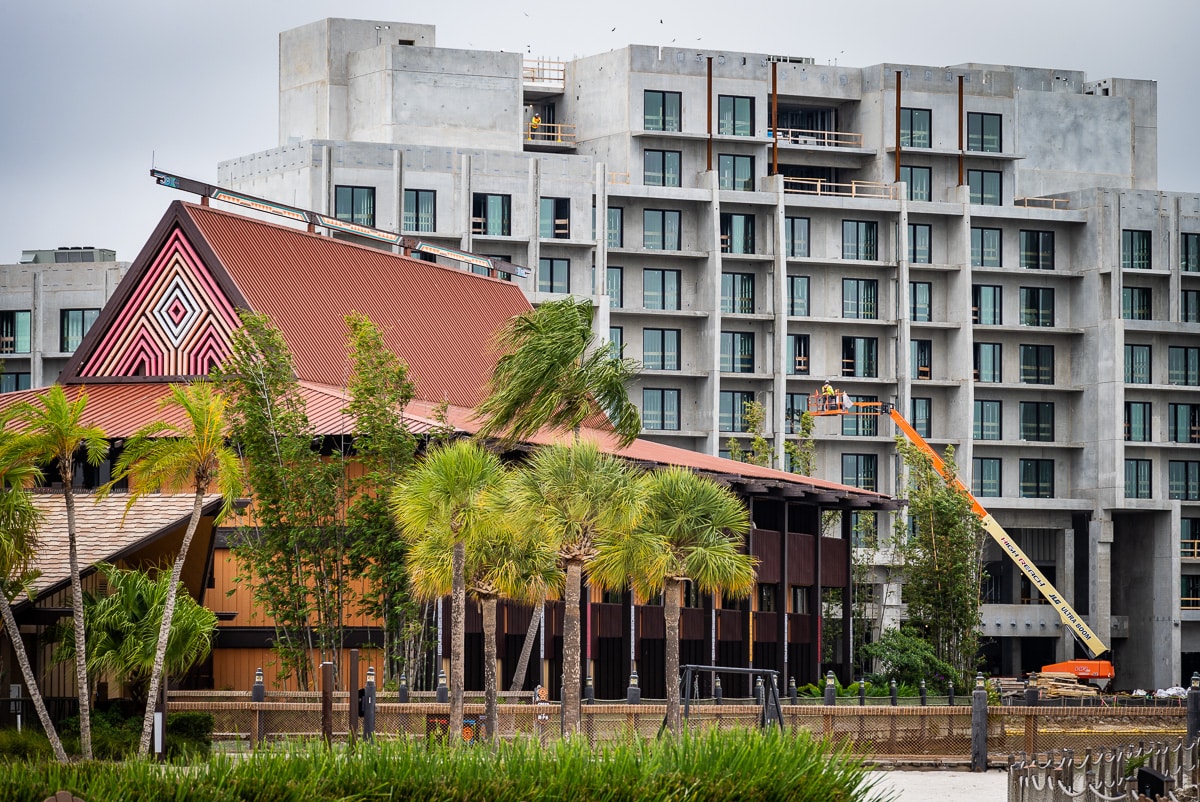
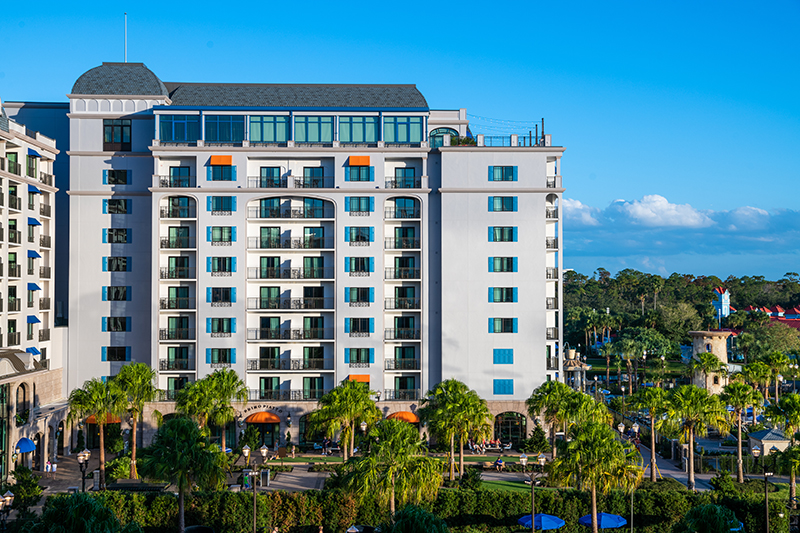
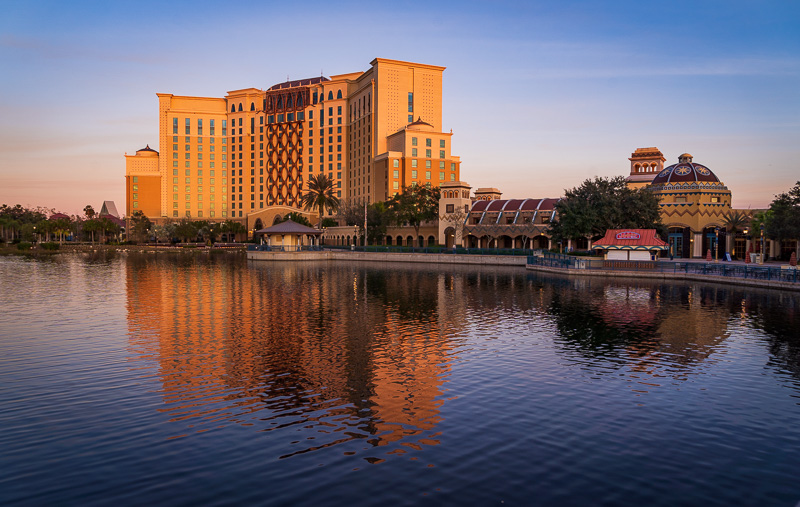
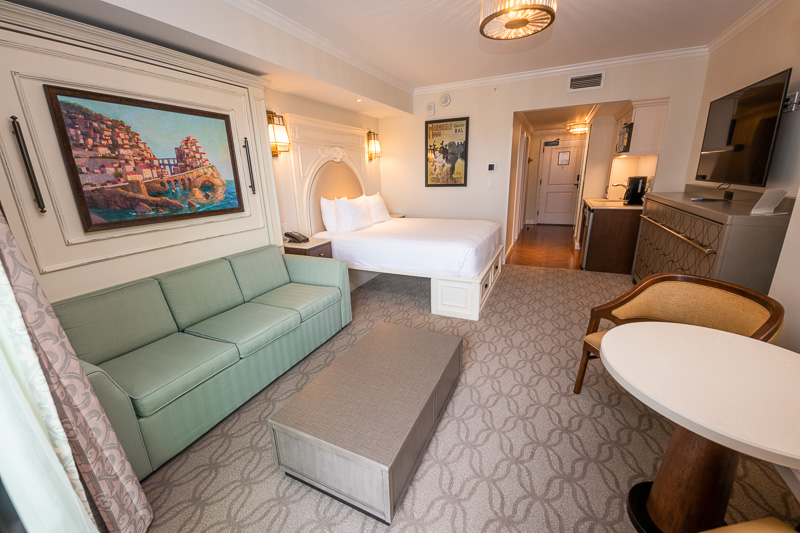
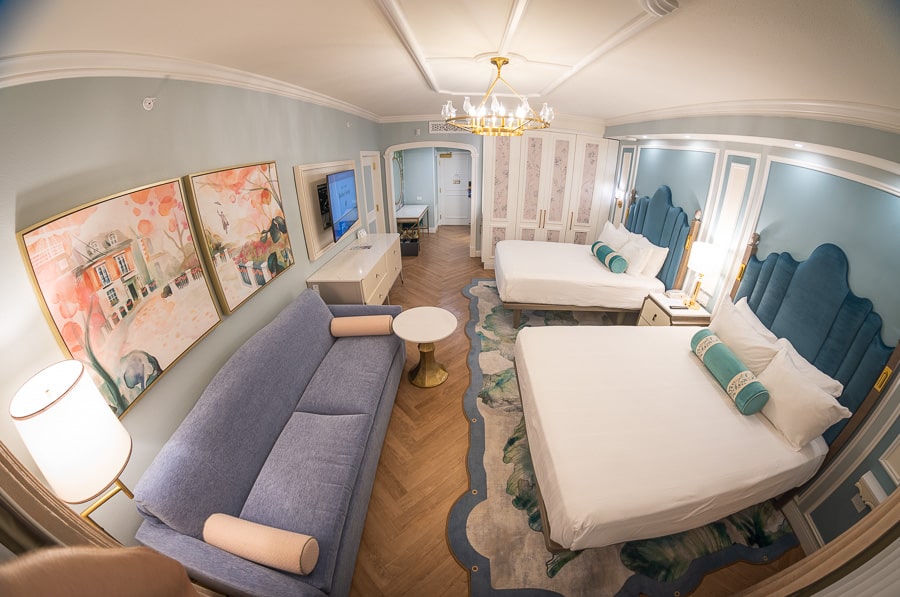
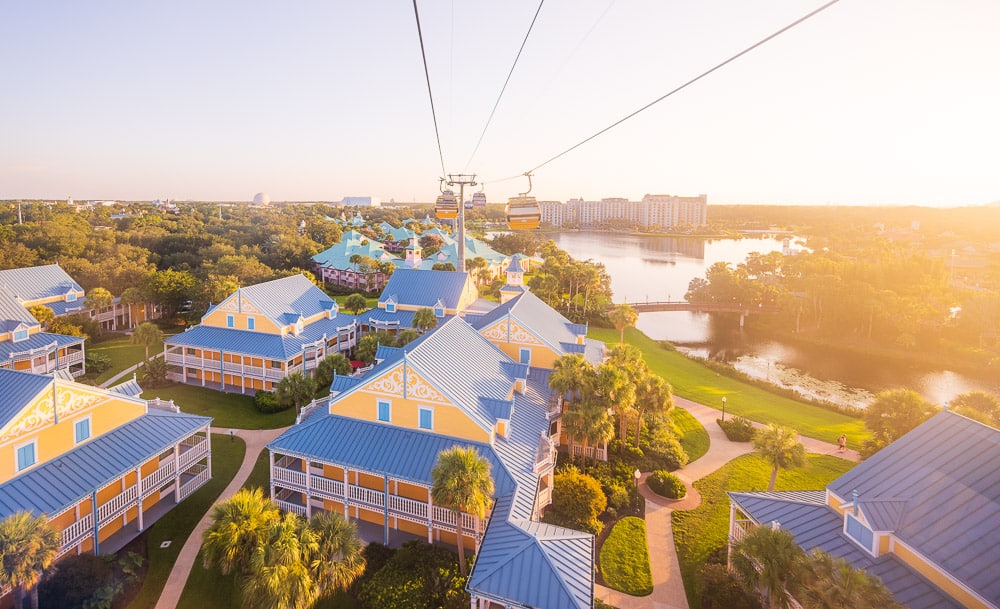
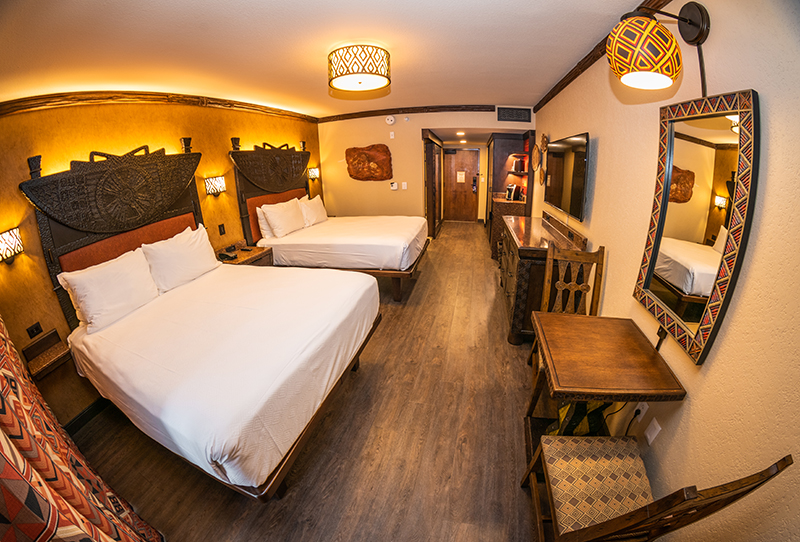
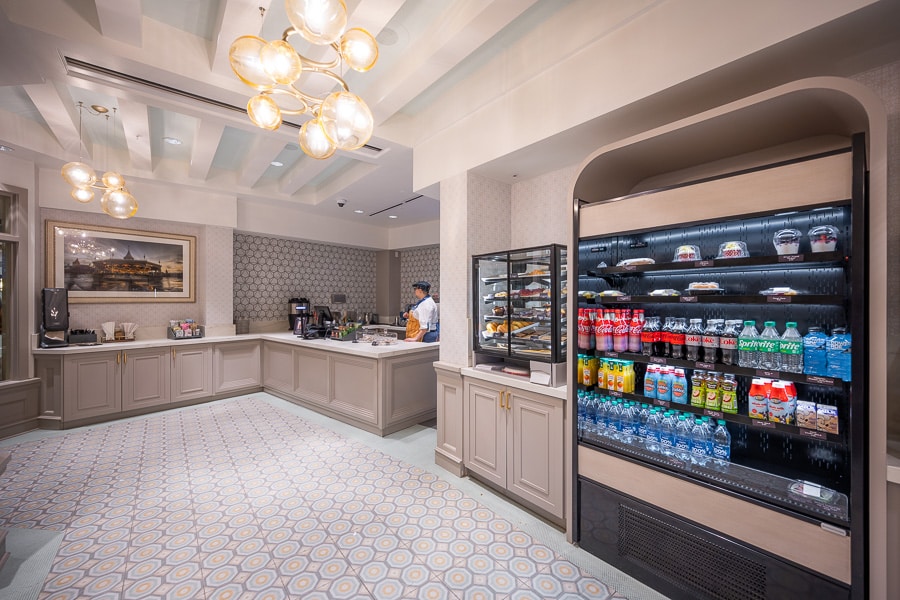
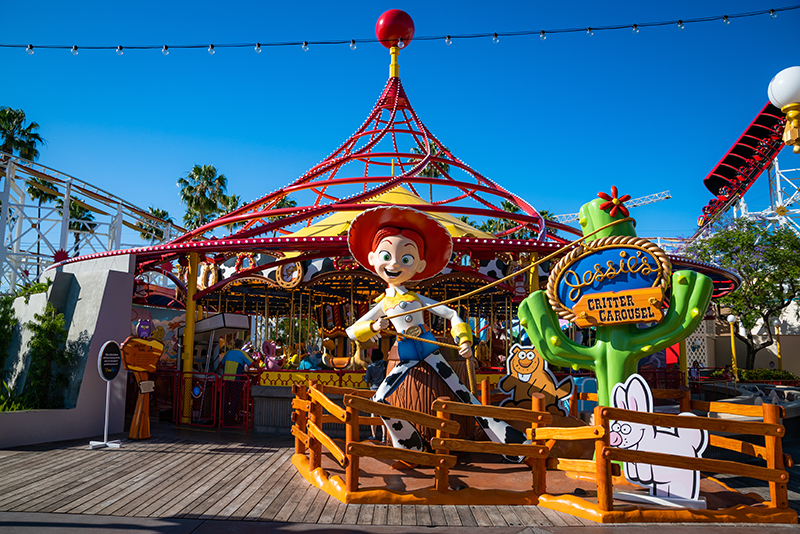
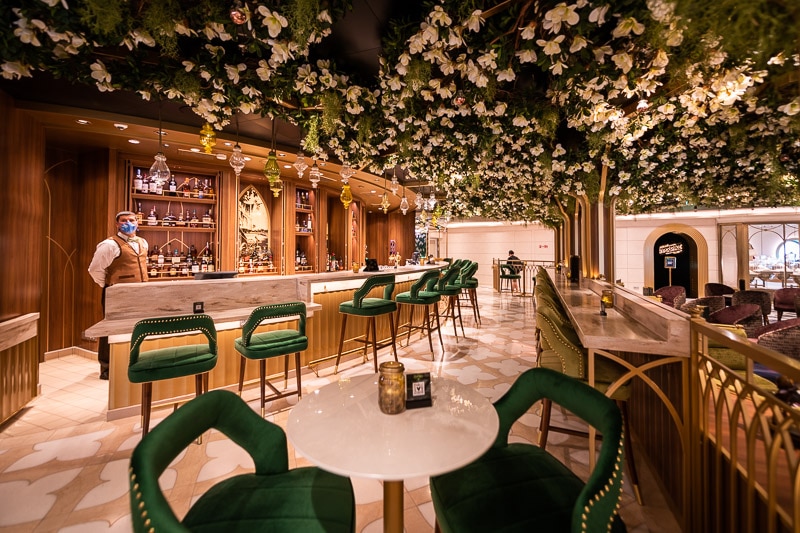
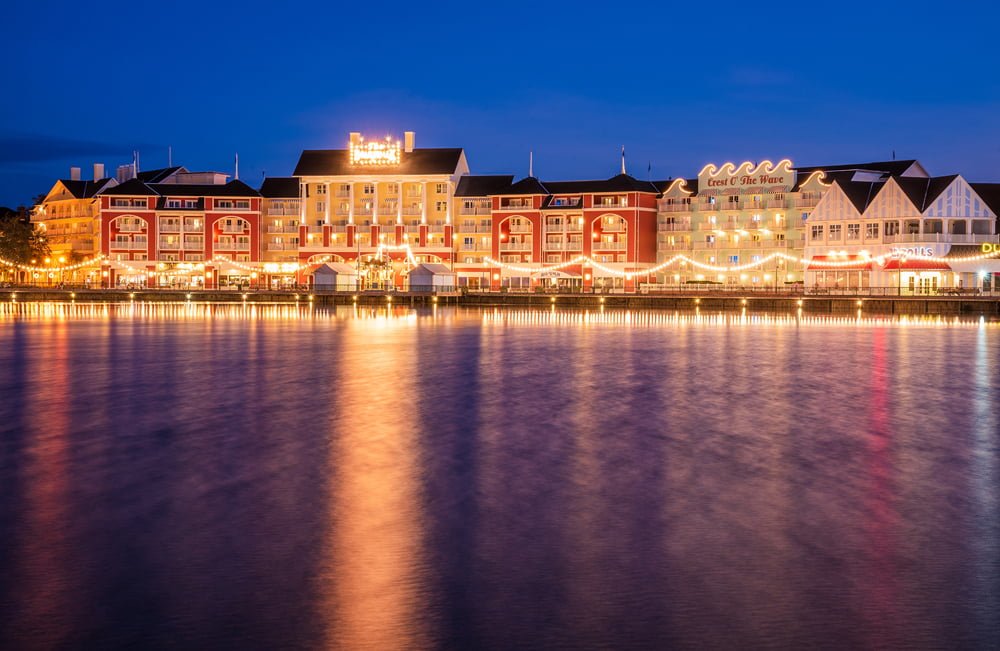
I don’t like it at all. It’s bland and boring and looks like a generic prison hotel. Not at all themed to the Polynesian. Disney totally dropped the ball on the design.
Walt Disney World and I were puppies together. Grandparents retired nearby, we visited 2-3 times a year from Connecticut. My parents spent had friends building or designing at pre-WDW. So they got to go behind the scenes and explore (alcohol was involved) with me in-utero.
I can recall bits of very early WDW. Like it being surrounded by orange groves early.
The brand new Contemporary was the most stylish and elegant hotel ever. I am still in awe of it. A family Sunday Brunch at the “Top of the Mark” was the stuff that dreams are made of. Add the Polynesian Hotel and the Grand Floridian and you had the trifecta of WDW hotels. Everything else was garbage to my family.
The trifecta meant something. It was ultimate Walt Disney magic. I recall only single nights here and there over the years. But I realized I can recall so many of the room and hallway decor 50 years later.
It made that much of an impression on us. It wasn’t about the characters at all. In fact I associate no characters at the Polynesian or the Contemporary. It was the ability to go to sleep somewhere outside of our world. The Grand Floridian in the early days I link with Alice in Wonderland because we bought a poster that was a copy of a painting in a GF public space depicting Alice choosing a book from an enormous bookcase of children’s stories.
It now hangs over the bed in our five year old daughter’s room.
We have taken her on 3 DCL cruises, she has been to WDW three times already and we are heading there for a week in late June.
If you were a kid at an earlier version of WDW, have you noticed that your child’s memories that stick are so different from yours? Her memories are mostly about the Mice, the Ducks and the Dogs in and around the parks. I wish we could try both styles in and see what is most comfortable, but the additions of generic towers along with losing the time and place focus of my favorite three hotels makes it impossible now.
AS WITH EVERYTHING , ITEMS & AREAS NEED TO BE UPDATED SOMETIMES FOR THE BETTER AND SOMETIMES NOT. WHY UPDATE THE CABINS? REFLECTIONS IS DELAYED , PROBABLY GONE , WHY NOT PUT/ BUILD THE NEW ACCOMODATIONS FOR DVC WHERE REFLECTIONS(THE OLD RIVER COUNTRY) WAS GOING TO BE. THAT WOULD GIVE THE DVC CROWD THEIR OWN AREA AND NOT DISTURB THE FORT WILDERNESS FEEL THAT EVERYONE LOVES. AT THE RATE DISNEY IS GOING THEY ARE GOING TO LOSE WHAT MAKES WDW SPECIAL , THEMING. DISNEY SEEMS TO HAVE LOST SIGHT OF WALT’S VERY CONCEPT WAS , TO BE IN A DIFFERENT WORLD–HENCE ‘WALT DISNEY WORLD’. FIRST THE BAY TOWER AT THE CONTEMPORARY , THE TOWER AT CORONADO SPRINGS , THE CABINS AT THE WILDERNESS LODGE , THE VILLAS & BUNGALOS AT THE POLYNESIAN(AND NOW THE NEW TOWER BEING BUILT THERE) , THE RIVIERA AND NOW MODERN DVC GOEMETRIC TRAILERS AT FORT WILDERNESS. EACH ONE OF THESE HAS RUINED WHAT MADE EACH PLACE UNIQUE AND SPECIAL , IT IS BEGINNING TO LOOK LIKE ANY OTHER HOTEL COMPLEX.
IT MAY SEEM LIKE I’M JUST COMPLAINING , BUT DISNEY MEANS SOMETHING SPECIAL TO ME(AND MY WIFE). WE WERE MARRIED AT THE WEDDING PAVILLION DECEMBER 1996(DURING THE 25TH ANNIVERSARY OF WDW) AND HONEYMOONED AT THE WILDRNESS LODGE. WE HAVE BEEN BACK FOR SEVERAL MILESTONE ANNIVERSARIES SINCE(1ST , 3RD , 5TH , 10TH & 15TH). WE CAME BACK FOR OUR 25TH IN DECEMBER 2021(DURING 50TH OF WDW) AND THE LOOK & FEEL WAS NOT THE SAME. THE WEDDING PAVILLION IS NOW JUST ANOTHER BUILDING AMONGST A BUNCH OF DVC ACCOMODATIONS , THE WILDERNESS LODGE LOST IT’S SECLUSION WITH DVC WING & THEN THE CABINS , CORORNADO SPRINGS ISN’T THE SAME WITH THE ‘GRAN DESTINO TOWER'(PLACE OF OUR 1ST ANNIVERSARY) AND NOW DISNEY WILL DO THE SAME WITH FORT WILDRNESS WITH THE FUTURE DVC “UPDATES”. FORT WILDERNESS WILL NO LONGER BE “THE FORT”.
WALT WANTED A RESORT TO BE COMPLETELY UNLIKE ANYTHING BEFORE OR SINCE — UNIQUE – A STAND ALONE.
Thanks for a great article.
To me, a 35-year WDW guest, the most egregious thing that has been done in resort theming has been the transformation of the Contemporary Resort from a forever-modern elegant resort to a cheap value resort on steroids.
The Incredibles theming is cheap the new room furnishings are flimsy.
It’s heartbreaking.
I agree with you in principle, but I think that decline has been decades in the making–it didn’t start with the Incredibles rooms (although I am not a fan of those).
In one of our Contemporary construction updates in 2021, we counted 5 different styles of carpet and 4 different types of tiles (that’s not counting the deliberate pattern choices around the buffet at Chef Mickey’s). All presumably installed during different projects over the years.
What bothers me most is the missed opportunity. They could redone the Grand Canyon Concourse in phases while occupancy was low during that 2020-2021 project, and made it the exact same style as the lobby, which I think was nicely done. Instead, they didn’t even touch the atrium. Fixing that is long overdue.
It’s sad to look back at photos of the Contemporary from the 1970s through mid-1980s; those elegant and sharp mid-century designs would be dated to some degree today, but arguably less-so than what’s currently there!
AGREED , BUT IT’S NOT THE ONLY ONE. MY WIFE AND I ARE LONG TIME VISITORS AS WELL.
AS WITH EVERYTHING , ITEMS & AREAS NEED TO BE UPDATED , SOMETIMES FOR THE BETTER AND SOMETIMES NOT. WHY UPDATE THE CABINS? REFLECTIONS IS DELAYED , PROBABLY GONE , WHY NOT PUT/ BUILD THE NEW ACCOMODATIONS FOR DVC WHERE REFLECTIONS(THE OLD RIVER COUNTRY) WAS GOING TO BE. THAT WOULD GIVE THE DVC CROWD THEIR OWN AREA AND NOT DISTURB THE FORT WILDERNESS FEEL THAT EVERYONE LOVES. AT THE RATE DISNEY IS GOING THEY ARE GOING TO LOSE WHAT MAKES WDW SPECIAL , THEMING. DISNEY SEEMS TO HAVE LOST SIGHT OF WALT’S VERY CONCEPT WAS , TO BE IN A DIFFERENT WORLD–HENCE ‘WALT DISNEY WORLD’. FIRST THE BAY TOWER AT THE CONTEMPORARY , THE TOWER AT CORONADO SPRINGS , THE CABINS AT THE WILDERNESS LODGE , THE VILLAS & BUNGALOS AT THE POLYNESIAN(AND NOW THE NEW TOWER BEING BUILT THERE) , THE RIVIERA AND NOW MODERN DVC GOEMETRIC TRAILERS AT FORT WILDERNESS. EACH ONE OF THESE HAS RUINED WHAT MADE EACH PLACE UNIQUE AND SPECIAL , IT IS BEGINNING TO LOOK LIKE ANY OTHER HOTEL COMPLEX.
IT MAY SEEM LIKE I’M JUST COMPLAINING , BUT DISNEY MEANS SOMETHING SPECIAL TO ME(AND MY WIFE). WE WERE MARRIED AT THE WEDDING PAVILLION DECEMBER 1996(DURING THE 25TH ANNIVERSARY OF WDW) AND HONEYMOONED AT THE WILDRNESS LODGE. WE HAVE BEEN BACK FOR SEVERAL MILESTONE ANNIVERSARIES SINCE(1ST , 3RD , 5TH , 10TH & 15TH). WE CAME BACK FOR OUR 25TH IN DECEMBER 2021(DURING 50TH OF WDW) AND THE LOOK & FEEL WAS NOT THE SAME. THE WEDDING PAVILLION IS NOW JUST ANOTHER BUILDING AMONGST A BUNCH OF DVC ACCOMODATIONS , THE WILDERNESS LODGE LOST IT’S SECLUSION WITH DVC WING & THEN THE CABINS , CORORNADO SPRINGS ISN’T THE SAME WITH THE ‘GRAN DESTINO TOWER'(PLACE OF OUR 1ST ANNIVERSARY) AND NOW DISNEY WILL DO THE SAME WITH FORT WILDRNESS WITH THE FUTURE DVC “UPDATES”. FORT WILDERNESS WILL NO LONGER BE “THE FORT”.
WALT WANTED A RESORT TO BE COMPLETELY UNLIKE ANYTHING BEFORE OR SINCE — UNIQUE – A STAND ALONE.
My first visit was in 73. Can’t agree with you more. Grafting IP into classics is wrong even if it turns out successful.
I personally believe that the Contemporary should and could be the flagship resort. It’s iconic and is famous. The pool area should be on par with the new Disneyland Resort or Storm Along Bay and the interior concourse and rooms redone in a retro future luxury. It should be lit up at night with atmospheric lighting.
My random unorganized thoughts:
1) Anyone who has complained about being in a building with a 3 minute walk to the pool, bus, or lobby. Or complained about the multiple internal stops is to blame for the new Hilton/Marriott towers. Blogs and FB posts are filled with questions as to what the best and most convenient building is. This is completely unsubstantiated, but I bet the front desk at OKW, Caribbean, POR, SSR, Coronado, Poly, etc. are inundated with request to be in a different building at check in.
2) The ugliest resorts, or least themed have all been under Iger, a programming guy.
3) I think the Contemporary should be the flagship resort on property. Redo that 4th floor with lighting effects, and a beautiful theme, maybe retro future. Get rid of the Incredibles rooms. Build a pool area on par with Yacht and Beach. Light up the exterior with LED effects on par with Spaceship Earth. Make it so that people in the monorail see a beautiful and whimsical, magical interior.
4) They need to replace the monorails to accommodate the new Poly Tower. They just need to be replaced period!
5) I love the spread out resorts and being able to soak up the them. Even All Star Music is beautiful to walk around.
I don’t know that the CEO can be blamed for the level of themed design at resorts. If so, it’s difficult to reconcile the incredibly well-done new and reimagined resorts at the international parks (minus Tokyo, since that’s entirely owned by OLC) with the trends at Walt Disney World.
(With that said, I would give Eisner credit for the quality of resorts during the Disney Decade. By all accounts, those were developed at his behest, and he micromanaged so much about them. For better or worse, I’m skeptical that Iger has had that level of involvement.)
So count me as a guest who dislikes sprawling resorts! I also am not comfortable with exterior facing rooms in the moderate/value resorts. The towers may be bland but they are probably more accessible, especially for guests who may have mobility issues.
The Polynesian is a sprawling resort done right; it’s a long hall jogging around the resort, but because it’s next to a lake rather than around a lake, the quickest path from your room building to Great Ceremonial Hall takes at most seven minutes. (That’s at my walking pace, which is slower than Tom’s but faster than my pushing a wheelchair pace.)
One thing you can always say about this site, is it’s unwavering support of bed runners! Is the pic of the bar with green chairs at the Riviera? That looks lovely.
Rambling but excellent article. But here is the thing about the criticism of recent resorts: There is an erroneous view of WDW history that the older resorts all had extraordinary transportive theming.
There are 3-4 Disney deluxe properties with truly transportive intricate theming, that’s it. Polynesian, Wilderness Lodge, Animal Kingdom and Boardwalk. Even there, the Boardwalk has become a rather generic property when viewed from anywhere other than the Boardwalk itself. Contemporary and especially BLT certainly don’t have transportive theming. Grand Floridian’s theme is what, Victorian elegance but copying a historic California resort? Yes, Beach Club is designed along the lines of old style New England beach clubs, but the draw in the pool, not pastel paints.
Meanwhile, the transition towards towers is an objective improvement despite some people preferring the sprawling property. As you said, most guests actually prefer a more condensed property — So you can walk to the QS or the pool in 2 minutes instead of 10 minutes. And in terms of environmental sustainability, towers are far superior as they use up less green space. (Building up rather than out).
Finally, I do think you underrate the theming successes of recent properties. Riviera does have a somewhat generic look from the distance, but when on property, it does have a distinct European Riviera feel. You may wish they have emulated a different part of the Riviera, or went with a greater degree of architectural flourishes, but to me, it does successfully generate the “feel.”
And the Poly tower might not be anything like the Bungalows, but if you put an Aulani tower on the Poly property, it really wouldn’t be objectionable. So I’ll wait and see the final look of the Poly tower, but I won’t object to a modern Polynesian look.
That’s not to say the recent construction and refurbs are flawless. But the past resorts weren’t all perfect and the modern ones certainly have a lot of positives. (Riviera has grown on me more each time I visit.)
At least you weren’t subjected to the rambling version of the significantly longer initial draft, which I started right when Carousel Coffee opened. That was even more unfocused and tangential!
Anyway, I think you have to use an exceedingly strict definition of “transportive” to claim that only those 3-4 resorts qualify. I’d personally include all Deluxes (minus Contemporary), most Villas, and every single Moderate Resort. There are areas of Art of Animation that I would also consider transportive, in a looser sense.
I would even include Disney’s Riviera Resort in that once you’re walking around the grounds or inside the hotel. Perhaps it comes across as nitpicky, but the laziness of the exterior design really bothers me. The chosen theme is an excellent one, and it could’ve had an exterior on par with or even better than those at Crescent Lake. There are some concepts that lend themselves to subtle or minimally-themed styles. The Riviera is not one of them–it’s the opposite.
Honestly, that addition of Grand Destino has always baffled me. My first job out of art school was with RTKL. The graphics group worked on all the themed graphics and signage for Port Orleans/Dixie Landings, Boardwalk and Coronado Springs. They were wrapping up Boardwalk and deep in the throws of Coronado. I had the opportunity to work on both but mostly Coronado. Clearly the new regime at Imagineering doesn’t understand that Mexico and Spain are not on the same continent. It was different creative leadership back then with different goals. I get that. But I also know what it took to conceive those projects back then. It was dedicated teams working to create an overall themed environment that emersed visitors in the experience. Things like the coffee shop are probably just being done as quick one-offs by internal teams working on 5 other projects at the same time. While I do like the overall design aesthetic of Grand Destino, I would have preferred it be somewhere else. Same for the other towers dropping down on the sprawling resorts. Tom, you aren’t the only one that like to walk the grounds and take in the theming.
It all started with the lobby change at the poly….
Last visit we were riding in the Disney bus from YC to AK and past what looked to me like an office building until I saw the sign: Swan Reserve.
Yes Steve but the interior is amazing and the rooms are so luxurious! We stayed there for the first time in January and were blown away with how much nicer the rooms and beds and bathrooms are than the Disney deluxe resorts. We stayed at Boardwalk in December in a non renovated room and it was just felt like an old mid range hotel and for what they charge it is disappointing. Sure the proximity is great but for a few more steps I can stay at the swan reserve for a third of the Cost. And they don’t fold the towels cute at the Disney hotels anymore.
I Agree about the design of the Swan Reserve. I truly could not fathom how they can let that design be approved so close to the boardwalk and Crescent Lake. No theme what-so-ever. I would have expected it to at least compliment or be similar to the Swan and Dolphin. That said, I stayed there and loved the resort rooms, pool, bar area, etc. I would gladly stay there again. And one other thing, access to the Dolphin/Swan feature pool is a shorter distance than some rooms at the Dolphin itself.
This is a Hall of Fame DTB post…great stuff!
I’m an old guy,I haven’t been back to WDW for quite awhile!I’ve stayed at the POLY,WL,PORT ORLEANS numerous times….going to stay at these locations was an event to look forward too.I even stayed at the DOLPHIN for 5 nights…it is on Disney property….but it was NOT the same!It was like staying at a convention hotel!These NEW hotels. …don’t do a thing for me….I WOULD Rather stay at one of the “old”WDW hotels! ALL I see with the NEW HOTELS… IS $$$$$$$$!
In the future… do not be surprised…. IF…..the “OLD”RESORTS…are torn down & replaced with newer HUGE HOTELS…. space is MONEY!DON’T THINK SO….LOL. It’s already starting to happen!!
You’re right that ‘space is money’ when it comes to the Magic Kingdom area. However, the problem with tearing down the existing low-density lodging and replacing it with towers is the burden on the infrastructure. Which is to say that the monorail is already overburdened, and that will only be made worse by the Poly tower.
I think the playbook will continue to be expansion at existing resorts, not outright replacement.
Hilton and Marriott would be ok. But when we start comparing Disney property to a Hampton Inn, there’s a problem.
I just think overall, the company has lost sight of what made Disney, Disney. It’s not that imagineering is doing a bad job per se. It’s that they don’t understand why the things are themed.
Also, I’d say other hotels are upping their game, making their hotels nicer which then makes the differences between a average Disney hotel and a regular hotel less distinguishable.
A lot of this isn’t Imagineering. There have been more ambitious and lavish hotel concepts in their menu planning that haven’t seen the light of day. The international parks continue to build nice hotels (minus the Toy Story ones, but I guess those are fine for what they are), so that should tell much of the story about who is to blame for the lack of ambitiousness.
Also agree that other hotels have stepped up their game of late. Even a lot of the newer budget tier/extended stay/suites in Flamingo Crossings or Anaheim near the parks are quite nice.
Thanks Tom – great post. I appreciate your thoughtful commentary, and agree with the vast majority of it. One thing I have to comment on, though, is Dinorama. I’ll preface this by saying I understand your view and the views of a lot of folks who don’t like it. I fully realize I am in the distinct minority here. But that said, I absolutely think Dinorama is a masterpiece. I promise you I don’t mean that sarcastically, ironically, or cynically. I genuinely believe it is one of the most delightfully themed areas in any WDW theme park. When I was a kid growing up, our summer vacations would be driving trips to National Parks and landmarks out west – Grand Canyon, Monument Valley, Black Hills, Yellowstone, etc. Near every single “major” attraction, we would come across at least one, often several, roadside “attractions” like Dinorama, built by a local entrepreneur looking to make a few bucks from the tourists going to see the main event. Dinorama perfectly – and I mean perfectly – captures those attractions, right down to the parking spots painted on the asphalt where the proprietor threw up an attraction on a former parking lot. Every time I walk through it I am transported back to my childhood and those summer vacations. The big, stupid grin on my face embarrasses my kids, but too bad. I know I need to get my Dinorama fix in now, because I fear its days are numbered. But I will always love it as a true highlight of Disney Imagineering. Anyway, I know this is an aside to the main point of your piece, but I thought I would share. Keep up the great work!
T.S. The fact that Tom has such a dislike for Dinoland is one of the few things that causes me to question his judgement. I concur with the points you’ve made, having had some of the same while reading this otherwise dandy article. We may be in the minority, but it doesn’t mean we’re wrong.
Obviously, I vehemently disagree with you both–but I also respect you for going against the grain and respectfully expressing a pro-Dinorama opinion on a site that is so stridently anti-Dinorama. Likewise, I also love many things at Walt Disney World that others dislike–doesn’t make me wrong or you wrong! 🙂
I was about to dare to praise Diorama when I saw T.S. wrote such a good defense! The problem is that the place convincingly evokes the seedy, slightly dangerous flavor of roadside attractions with carnival ‘low-life’ tropes so much so that I instinctively tuck my wallet lower into my bag,.. the cracked pavement feels like neglect and the sun beats down mercilessly,.. it’s almost too good a joke,.. but I don’t get why Tom doesn’t at least praise the adventurousness of the design since that’s his guiding light: it might be a failure but it was daring for sure,..
It might all be a product of good/bad project committees. Obviously Galactica had great committee members and their project manager was a Star Wars expert. Same with AK Lodge, their committee members clearly tapped subject matter experts and must have spent time in Africa. On the other hand, the committee for the refurb of Yacht and Beach Club must have used Google images to imagine what a Beach Club was cause they look like boring and bland New England Beach cottages, not a yacht and Beach club. Those project committee members should have visited The Breakers to see what a Florida yacht and bleach club hotel really looked like.
I want to disagree to an extent on the Polynesian Tower as it does remind me quite favorably of the post-war ’50s Waikiki hotel boom in design. However, that’s probably a ‘sunshine and roses’ perspective and more of me projecting what I’d like it to resemble as opposed to what it actually will. Also, point taken on what it does to the Monorail loop aesthetic.
I really and truly hope you are right and I’m wrong. Nothing would make me happier than to write a post about how the Poly tower doesn’t look as bad as expected, and is an asset to the resort.
I will say that I think the complaints about the tower at DLH are a bit overblown and I’ve warmed to that over time. Part of that, though, is that the existing towers at DLH are absolutely nothing special and could stand an aesthetic overhaul (more than just being repainted). Much different story with the Poly.
We are staying at Riviera this summer for the first time and are really excited about the trip. Does it have the exterior detail of Beach Club or the expanse of Stormalong Bay? No, but we’ve adjusted our expectations on those things and there is a lot it seems that Riviera has to offer our family. We can’t wait to arrive!
There’s a lot to love about Riviera Resort. I really wish part of that was an ornate exterior (I’m fine with its pool), but that doesn’t mean it’s all bad. We love actually staying there–or even staying at CBR and taking advantage of Riviera’s dining and grounds.
You will LOVE the Riviera
It smells so fresh and clean
It’s very relaxing and get a room facing the skyliner
The rooms there are 1000 times better than Yacht or Beach Club
Great quick service and Table service restaurants too
We loved Riviera, it was a fabulous resort experience. I do feel like pictures from afar seem to indicate a lack of detail, but when you are up close you do notice more detail. Could it be better, probably, but I was more impressed than I expected. The interior is beautiful and you are right about the room layout. Tons better than Beach Club.
I still feel the pool area is a bit small on the family side. We struggled finding shaded seating one afternoon. Our kids liked the pool a lot though and said the slide was fun.
Overall, we would stay again at Riv. Didn’t get the room view I wanted, but our stay was really great. We liked all of the food, the only thing we didn’t try was Toppolono’s for dinner. Otherwise we got to experience everything Riviera had to offer!
May The Fourth Be With You.
Happy Star Wars Day
Is WDW doing anything to celebrate the anniversary?
There’s merchandise, food, and photo ops.
For those at home, there’s a live stream of DJ R3X at Oga’s Cantina: https://www.youtube.com/watch?v=i15vzSFbHmo I think that one is kinda fun!
There also is or will be (I haven’t seen it yet) Gaya’s soundtrack from Galactic Starcruiser. I’m curious to hear that.